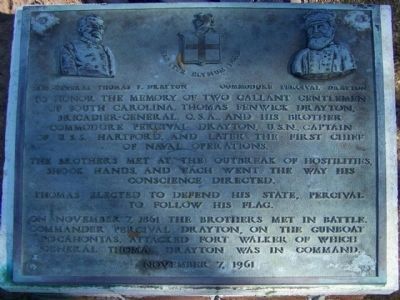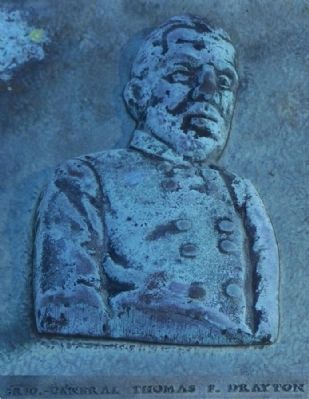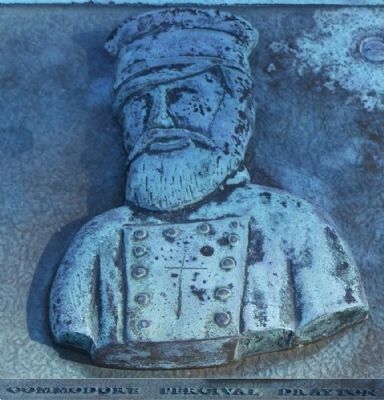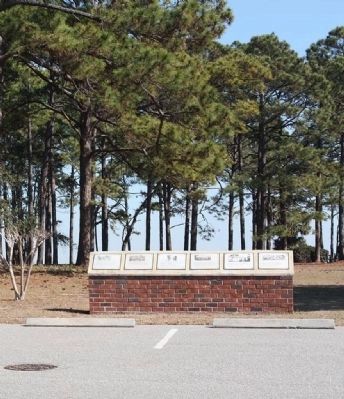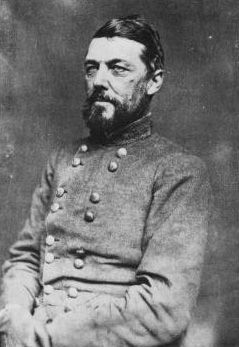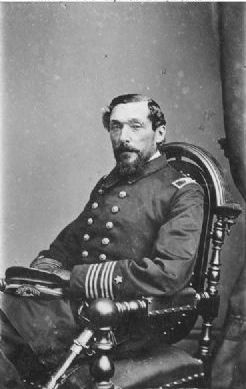Hilton Head Island in Beaufort County, South Carolina — The American South (South Atlantic)
Two Gallant Gentlemen from South Carolina
Inscription.
To honor the memory of two gallant gentleman
of South Carolina. Thomas Fenwick Drayton;
Brigadier-General, C.S.A. and his brother
Commodore Percival Drayton, U.S.N., Captain
of U.S.S. Hartford, and later the first Chief
of Naval Operations.
The brothers met at the outbreak of hostilities, shook hands, and each went the way his
Thomas elected to defend his state. Percival
On November 7, 1861 the brothers met in battle. Commander Percival Drayton, on the gunboat Pocahontas, attacked Fort Walker on which General Thomas Drayton was in command.
Erected 1961.
Topics. This historical marker is listed in these topic lists: Forts and Castles • War, US Civil • Waterways & Vessels. A significant historical date for this entry is November 7, 1861.
Location. 32° 14.107′ N, 80° 40.668′ W. Marker is on Hilton Head Island, South Carolina, in Beaufort County. Marker is on Fort Walker Drive. Located near Circle at Catesby Lane ~ Located on Port Royal Plantation - a secure Gated Community- Restricted access. Touch for map. Marker is in this post office area: Hilton Head Island SC 29928, United States of America. Touch for directions.
Other nearby markers. At least 8 other markers are within walking distance of this marker. Hilton Head (within shouting distance of this marker); Battle of Port Royal (within shouting distance of this marker); Steam Gun (within shouting distance of this marker); Fort Walker (approx. 0.2 miles away); "Robbers Row" (approx. 0.2 miles away); The Dawn of Freedom: Mitchelville (approx. half a mile away); The Battle of Port Royal / William Fitzhugh and Black Sailors in the Union Navy (approx. half a mile away); Black Troops on Hilton Head (approx. half a mile away). Touch for a list and map of all markers in Hilton Head Island.
Also see . . .
1. General Drayton, Wikipedia entry. Drayton was an 1828 graduate of the United States Military Academy, where he was a classmate of Jefferson Davis, who became his lifelong friend. (Submitted on February 26, 2009, by Mike Stroud of Bluffton, South Carolina.)
2. Commadore Drayton, Wikipedia entry. Drayton was appointed a Midshipman in the Navy in December 1827 (Submitted on February 26, 2009, by Mike Stroud of Bluffton, South Carolina.)
3. USS Pocahontas. operated along the coasts of South Carolina, Georgia, and Florida, performing blockade duty, reconnoitering rivers and inlets, and supporting amphibious operations. She helped to capture Tybee Island, Georgia 24 November (Submitted on February 26, 2009, by Mike Stroud of Bluffton, South Carolina.)
4. Battle of Port Royal. Port Royal Sound was defended by Fort Beauregard to the north, on Bay Point on Eddings Island, with 13 guns, and by Fort Walker on Hilton Head to the south, mounting 23 guns (although only 16 were operational in the battle). The forts were less than 3 miles apart across the Broad River, strongly built, and manned by gunners who had been alerted for over a week of the impending attack. The Confederates also had a flotilla under Commodore Josiah Tattnall of three tugboats, mounting one gun each, and a converted river steamer. (Submitted on February 26, 2009, by Mike Stroud of Bluffton, South Carolina.)
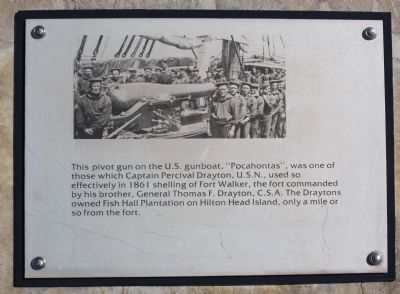
Photographed By Mike Stroud, February 6, 2009
7. From Interpretive Marker
This pivot gun on the U.S. gunboat, "Pocahontas",
was one of those which Captain Percival Drayton,
U.S.N., used so effectively in 1861 shelling of
Fort Walker, the fort commanded by his brother,
General Thomas F. Drayton, C.S.A. The Draytons
owned Fish Hall Plantation on Hilton Head
Island, only a mile or so from the fort.

Photographed By Mike Stroud, February 6, 2009
8. Interpretive Marker along Ft. Walker Drive,
The Charleston and Savannah Railroad, today
part of the Seaboard Coast Line System, (today, CSX)
was built in 1853 by General Thomas Fenwick
Drayton. General Drayton in 1838 married Emma
Pope, heiress of Fish Hall Plantation, located
approximately one mile across the marsh
northwest of this point. The C&S Railroad
remained an important Confederate rail link
until early 1865 despite many Union attempts
to sever it.
Credits. This page was last revised on June 16, 2016. It was originally submitted on February 26, 2009, by Mike Stroud of Bluffton, South Carolina. This page has been viewed 2,924 times since then and 55 times this year. Last updated on February 26, 2009, by David Seibert of Sandy Springs, Georgia. Photos: 1, 2, 3, 4, 5, 6, 7, 8. submitted on February 26, 2009, by Mike Stroud of Bluffton, South Carolina. • Craig Swain was the editor who published this page.
